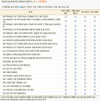Abstract
Objective
The purpose of this study is to design the web-based dialogue expert system for preventing and managing of habitual substance disorders in adolescents.
Methods
Research process includes the requirement analysis, making of questionnaires, actual survey, and its analysis. Based on the analysis, we designed the web-based dialogue expert system.
Results
The habitual substance disorders in adolescents are variable. Our system for managing habitual substance disorders contains the diagnosis of alcoholism, nicotinism, and narcotism. And it analyzes the facts of them based the questionnaires and answer. As the results of the analysis, main reasons in order of the power of influence are belief, will of refusal, personal characteristics, family environment, and psychological personality. Our system suggests the customized solution to conquer that for each adolescent. Moreover, our system also includes the history tracking mechanism to manage the status of each teenager constantly and to make the survey and analysis information. Available at http://www.baejy.com/yebang/
Figures and Tables
 | Figure 12Checkup list for uneasy personality13)
|
References
1. Choi JJ. A Research on Juvenile Drug Abuse - with priority given to Daejeon. 2001. 1–82. A master's thesis (Dept. of Social Walfare) of Daejeon University.
2. Wright Roosevelt JR, Watts Thomas D. Alcohol and Minority Youth. Journal of Alcohol and Drug Education. 1991. 36(2):68–72.

3. Velicer W, DiClement CC, Rossi JS, Prochaka J, Brandenburg N. A decisional bala nce measure for assessing and predicting smoking status. Journal of Personality and Social Psychology. 1985. 48:1279–1289.

4. Aas H, Klepp K, Laberg JC, Aarø LE. Predicting adolescents intentions to drink alcohol. Journal of Studies on Alcohol. 1995. 56:293–299.
5. Kim KJ. The Effect of Academic Achievements and Perceive Parental Attitudes on Self-concepts of Elementary and Secondary School Students. 1984. Dissertation of ChungAng University.
6. Kwak KJ. Life Satisfaction of Adolescents in Terms of KLSSA. Korean Psychological Journal on Social Issues. 1995. 2(1):5–12.
7. Herbert WM. Multidimensional Self-Concepts:Construct Validation of Responses by Children. American Educational Research Journal. 1990. 27(1):89–117.

8. Research Institute of Behavioral Science in Korea University. Handbook of Psychology(2). Hakjisa publish company. 2000. 2:197–288.
9. Kim J, Kim KB, Joen HM. The Standardization Study of High Rish Group of Adolescent Drug Users Screening Test (II): Validation Study. 1998. 2(1):National Seoul Hospital.
10. Joeng . Adolescents Today. 1985. Institute of Research for Korean Adolescents (Young-Sin Acadamy in Chung-Ang University).
11. Barratt ES. Barratt Impulsiveness Scale, Version 11 (BIS 11). Handbook of Psychiatric Measures. 2000. Washington, DC: American Psychiatric Association;691–693.
12. Lee H.S. Impulsivity Test. 1992. Seoul: Korean guidance.
13. Kim KI, Kim JH, Won HT. Symptom Checklist for Simplified PsychologyDiagnostic. 1984. 1:1st Edition. ChungAng Aptitude Publishing Company;7–39.




 PDF
PDF ePub
ePub Citation
Citation Print
Print




















 XML Download
XML Download